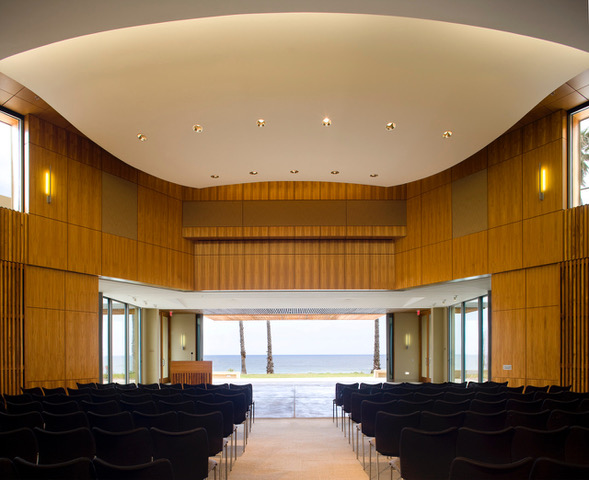
Institutional Seminar Series
(in person)
Thursday, November 3rd
at Scripps Seaside Forum Auditorium
11 a.m. Talks begin w/ Q&A
Pizza to be served after
-------------------------
Title: Unveil Hidden Physics in Wave-related Phenomena using Computer Simulation
Abstract: Waves are an endless song of the atmosphere and ocean. They provide us a peek into the ocean interior and distort the sunlight that passes through. Occasionally, waves become furious beasts that crush lives. Since the dawn of civilization, we have been living and fighting with waves. Many of the wave-related phenomena remain poorly understood, despite their importance to the fate of ocean creatures, the evolution of weather and climate, and the daily operations of man-made structures. With the advance in computer techniques over the past several decades, we can now simulate these phenomena and unveil the hidden physics. In this talk, I will first introduce our recent progress in the study of wave energy growth at both stable and unstable wind speeds. Then, I will present the simulation result of the surface wave roughness changes caused by internal waves, also known as zebra patterns on satellite images. Finally, I will show how to accelerate the simulation of sunlight propagation through waves and achieve a 1000-time speed-up by using machine learning.
Bio: Xuanting Hao is an assistant professor with a joint appointment between Scripps Institution of Oceanography and Department of Mechanical and Aerospace Engineering at UC San Diego. Xuanting seeks to understand the small-scale physical processes at the atmosphere-ocean interface. He builds physics-based and data-driven models to gain insights into the lively air–sea processes. Applications include weather forecasting, renewable energy harvesting, and marine infrastructure protection. Xuanting holds a PhD degree in Mechanical Engineering from the University of Minnesota and a Batchelor degree in Automotive Engineering from Tsinghua University.
Title: Constraints on lithology, pore-filling media, and pore closure depth beneath Insight on Mars
Abstract: Constraining the pore closure depth and distribution and volume of subsurface liquid water, ice and other mineral cements, and lithologies in the Martian crust are critical to unraveling the planet’s geologic evolution and for searching for current or past Martian life. Our study quantifies the above-mentioned mechanical properties beneath InSight on Mars by using rock physics models to interpret seismic velocities (shear Vs and compressional Vp) inferred from InSight data. We interpret Vs and Vp in the shallow (0-0.3 km) crust but only Vs in the upper (1-8 km) and deeper (8-20 km) crusts. Our primary interpretations are that the shallow crust comprises sediments and fractured basalts, the upper crust comprises fractured basalts and cemented sediments, and the deeper crust comprises gas or water-filled fractured basalts. Grains within sediment layers in the shallow crust are unlikely to be cemented at grain contacts (by mineral cements or ice), implying that any cement present in the shallow crust is nodular or not located at grain contacts. Impacts or marsquakes have likely broken pre-existing cements located at grain contacts in the shallow crust. Fractured basalts in the shallow crust could comprise 2% mineral cement and 98% gas, 100% gas, or less than 20% ice. We interpret that the sediment layers within the upper crust beneath InSight are minimally (2%) cemented and gas fills fractured basalts. The fractures in the deeper crustal basalts could remain uncollapsed with gas, liquid water, and 2% mineral cement filling the pores. Notably, with Vs alone, we are unable to distinguish between liquid water versus gas within the pores or between a basalt versus a plagioclase feldspar igneous host rock. Measured velocities are lower than modeled for ice-saturated cryosphere layers in the shallow and upper crusts, while temperatures are too high for ice to exist in the deeper crust. Future studies may use seismic anisotropy and rock physics models to detect mushy ice and quantify crack orientation.
*Talks will not be recorded.




